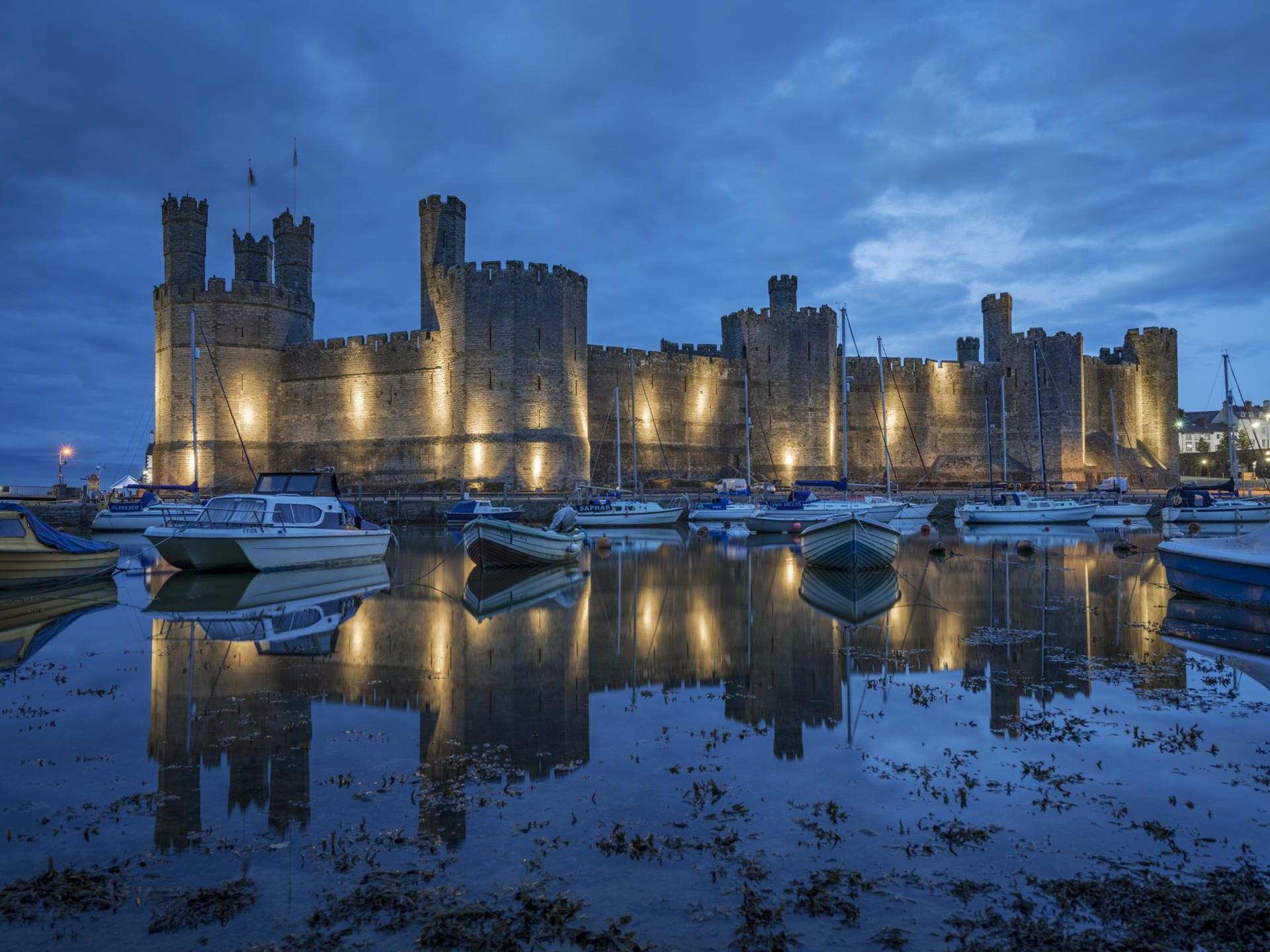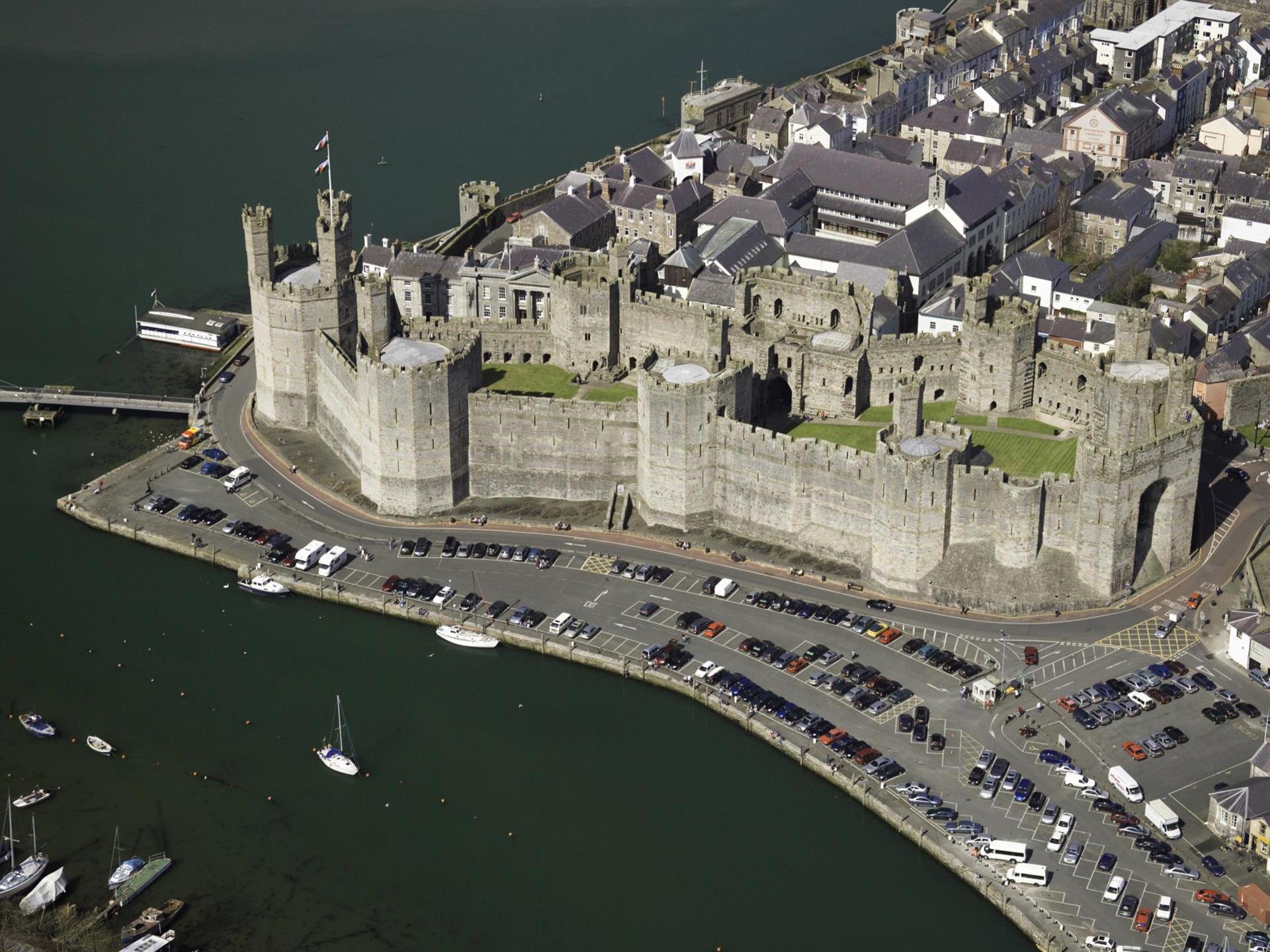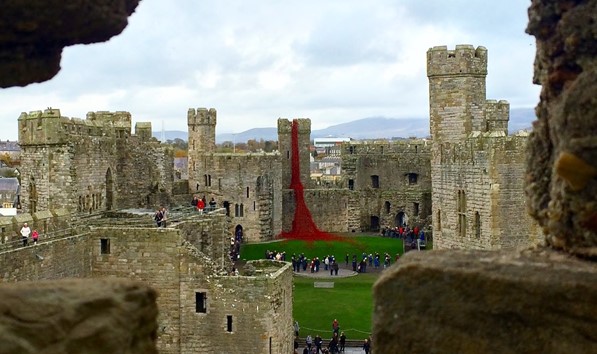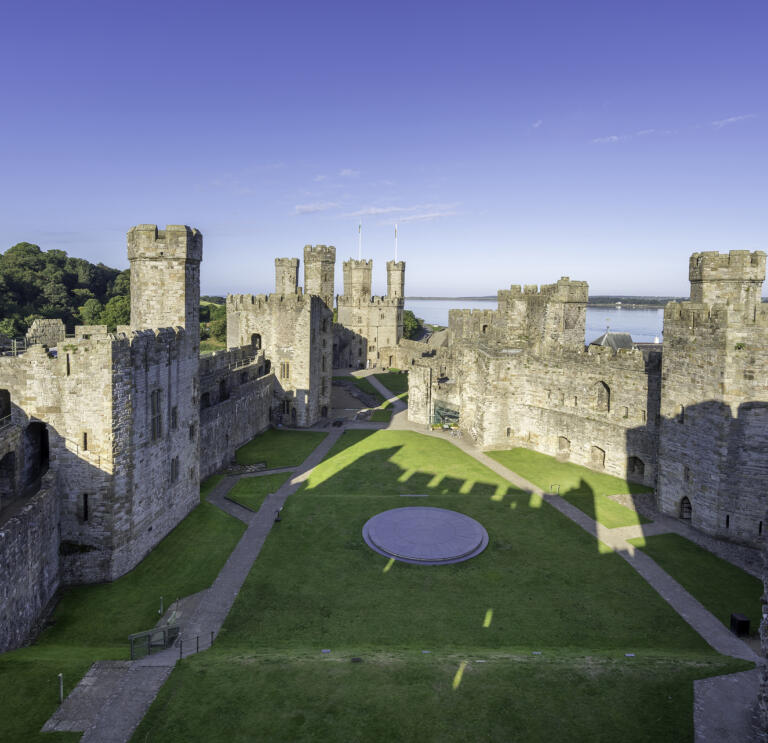Caernarfon Castle is a medieval fortress in Gwynedd, northwest Wales. The original fortification was a motte-and-bailey castle built in the late 11th century. In 1283, King Edward I of England began constructing the current stone structure. Edward’s castle and town served as the administrative center of north Wales, and the defenses were built to be impressive. The design intentionally echoed Caernarfon’s Roman history, with nearby Roman fort Segontium and walls reminiscent of those in Constantinople.

As the castle was being built, town walls were also constructed around Caernarfon. The project, which lasted until 1330, cost between £20,000 and £25,000. Although the exterior of the castle appears mostly complete, many interior buildings are gone, and some parts were never finished. In 1294, during Madog ap Llywelyn’s rebellion, the town and castle were captured but retaken the following year. The castle withstood a siege during the Glyndŵr Rising (1400–1415). After the Tudor dynasty came to power in 1485, Welsh-English tensions eased, and castles like Caernarfon became less crucial, leading to its decline.

Despite falling into disrepair, Caernarfon Castle played a role in the English Civil War, held by Royalists and besieged three times by Parliamentarians. This was the last military use of the castle. It remained neglected until the 19th century when the state funded repairs. The castle was used for the investiture of the Prince of Wales in 1911 and 1969. Today, it is managed by Cadw, the Welsh Government’s historic environment service, and is part of the World Heritage Site “Castles and Town Walls of King Edward in Gwynedd.”

The first fortifications at Caernarfon were established by the Romans, who built a fort named Segontium on the outskirts of the modern town. Situated near the bank of the River Seiont, the location was likely chosen for its sheltered position and easy resupply via the river. The name Caernarfon originates from these Roman fortifications; in Welsh, the place was called y gaer (lenition of caer) yn Arfon, meaning “the stronghold in the land over against Môn” (Môn being the Welsh name for Anglesey). Little is known about Segontium’s fate and its associated civilian settlement after the Romans left Britain in the early 5th century.

Early Castle
Following the Norman Conquest of England, William the Conqueror focused on Wales. According to the Domesday Survey of 1086, Norman Robert of Rhuddlan was in nominal command of northern Wales but was killed by the Welsh in 1088. His cousin, Hugh d’Avranches, Earl of Chester, reasserted Norman control by building three castles: one at an unknown location in Meirionnydd, one at Aberlleiniog on Anglesey, and another at Caernarfon.
This early Caernarfon Castle was built on a peninsula bordered by the River Seiont and the Menai Strait. It was likely a motte-and-bailey structure, defended by a timber palisade and earthworks. The motte, or mound, was later incorporated into the Edwardian castle, though the exact location of the original bailey is uncertain, possibly to the northeast of the motte. Excavations in 1969 on top of the motte revealed no traces of medieval occupation, suggesting any evidence had been removed. The motte probably featured a wooden tower, or keep.

The Welsh recaptured Gwynedd in 1115, and Caernarfon Castle came into the possession of the Welsh princes. Historical documents indicate that Llywelyn the Great and later Llywelyn ap Gruffudd occasionally stayed at Caernarfon.


